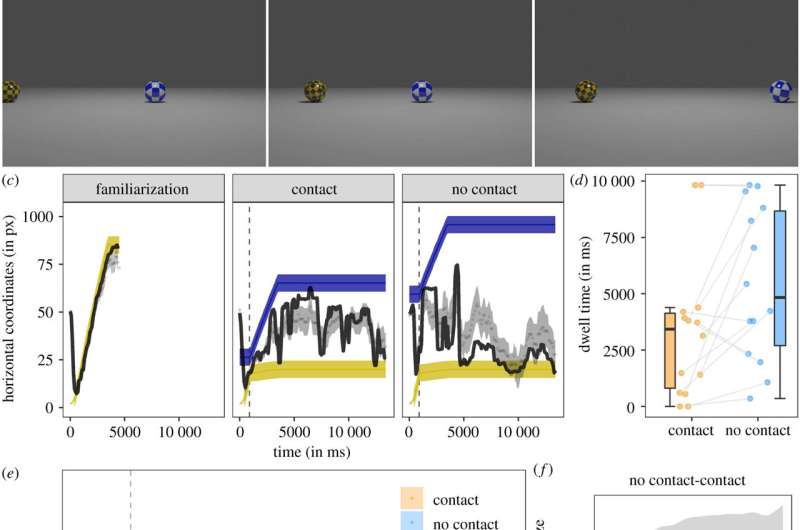December 22, 2021 report
Dogs notice when computer animations violate laws of physics

A pair of researchers at the Medical University of Vienna and University of Vienna has found that dogs notice when objects in the world do not conform to the laws of physics. In their paper published in the journal Biology Letters, Christoph Völter and Ludwig Huber describe experiments they conducted with pet dogs looking at objects depicted on a computer screen.
Prior research has shown that human babies and adult chimpanzees tend to notice if something they are looking at appears to violate the laws of physics—things dropping upwards, instead of down, for example. In this new effort, the researchers have found the same is true for pet dogs.
The experiments by the researchers involved first teaching 14 adult pet dogs to watch a video while resting their chins on a cushioned fixture. The cushion was situated in a way that allowed for conducting eye tracking and also measuring pupil dilation in the dogs.
Once the dogs were trained, each was asked to watch a video that showed one ball rolling toward another. Eventually, the first ball collided with a second, forcing the first to stop moving as the second began to move in reaction to the collision. Next, each dog was asked to watch a similar video, only this time, the moving ball stopped rolling before it collided with the second ball. But the second ball behaved as if it had been hit, suddenly rolling into action anyway.
The researchers then studied the data from the biosensors. They found that the dogs stared longer at the balls while watching the second video. They also found that their pupils became more dilated. The researchers note that both reactions are typical for dogs who are more alert to something unexpected happening. Dilated eyes, for example, also occur in people and other animals when they encounter something that requires more visual attention. In this instance, the researchers suggest the dogs became more alert and watched for a longer period of time because they were expecting something else to explain why the second ball started rolling.
More information: Christoph J. Völter et al, Dogs' looking times and pupil dilation response reveal expectations about contact causality, Biology Letters (2021). DOI: 10.1098/rsbl.2021.0465
Journal information: Biology Letters
© 2021 Science X Network





















